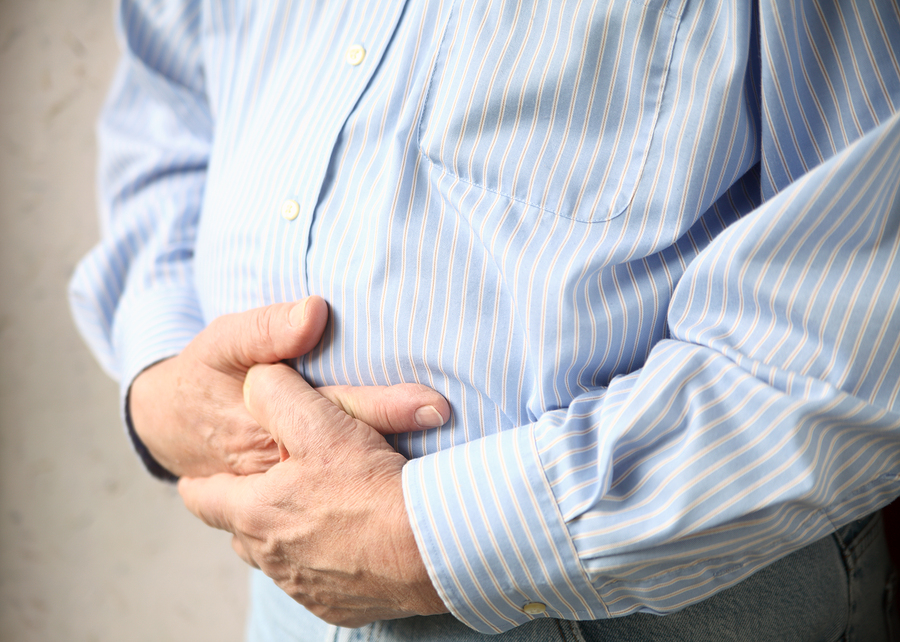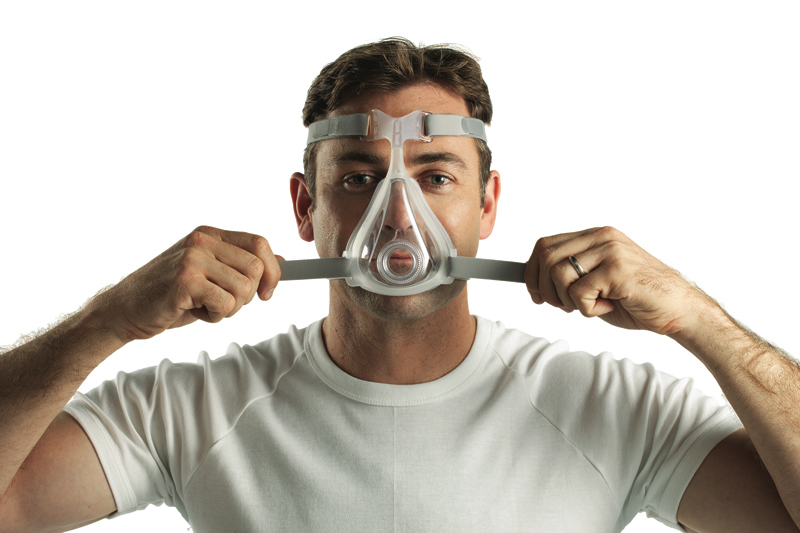
No, aerophagia is not a new store that sells expensive, designer jeans. Nor is it a new fragrance that promises an unmistakable attraction to the opposite sex. Have you ever experienced an excessive belching fit? Have you ever just started uncontrollably burping really loudly? How about from the opposite end? What about stomach pains, distention and bloating? These symptoms are usually a sign of a condition called aerophagia, which comes from the ancient Greek word that means “eating air,” and that is exactly what you are doing – air builds up in the esophagus and has nowhere to go, so it ends up in your stomach. If you are a bubble gum chewer, fast talker or open mouth breather, this little gassy problem could be happening all the time. Although, if you have obstructive sleep apnea and undergo CPAP treatment, you could be getting what is called CPAP related stomach bloating or aerophagia. It’s a relatively common problem, but one with plenty of solutions. Here are seven ways to alleviate CPAP related aerophagia.
1. You might want to try another CPAP mask.
If you sleep with your mouth wide open or if you have a habit of taking big gulps of air in your sleep, you might want to try a full face mask instead of a nasal mask. This could put you in the habit of keeping your mouth closed when you sleep and it will cover both of your respiratory tracts, so that excess air doesn’t get trapped in your esophagus. Also, if the mask is too tight, lose, or is causing pain and chaffing – it could be a sign that either your CPAP mask doesn’t fit correctly or that you need a new, fresh mask. You could try adjusting the straps of your mask, but if that doesn’t help, it is probably a safe bet to pick up a new one. Our you can try a chin strap that will hold your mouth closed, to prevent you from swallowing air.

2. Change the pressure settings on your CPAP machine.
Perhaps one of the most common reasons why you are experiencing CPAP related stomach bloating is because the pressure on your CPAP machine is either too high – usually it’s too high – or too low. In this case, you want to speak with your physician about adjusting the CPAP pressure. Additionally, your CPAP machine could accidentally be set to the wrong pressure setting – all you have to do is change it back. So, make sure that the pressure settings are correct on your CPAP machine.
3. Make sure that your CPAP mask fits perfectly.
When you get a new CPAP mask, oftentimes it won’t fit perfectly right out of the box, so you must make a few adjustments. One of the first steps is to adjust the straps – you want the edges of the mask to fit perfectly against your face without fitting too tightly and without any place for air to escape. The key is to get the perfect seal. You may even want to lay down in your most comfortable sleeping position and then see how the mask fits. Perhaps you can move around a bit – try rolling over and simulating some movements you may make in your sleep. Does the mask still fit? Finding the most comfortable fit and seal is critical to alleviating aerophagia.

4. Try sleeping at an incline, or in a different position.
Many people sleep in awkward positions, but some of these positions can actually create the perfect storm for stomach bloating. For instance, do you sleep with your chin close to your chest? Do you sleep on your back? The general rule of thumb is that you want to be able to fit your entire fist between your head and neck when you sleep. Sometimes this can be hard to accomplish when you are unconscious, but you can always ask your bed partner to help you. If you are cutting the cheese in your sleep, whomever is sleeping next to you may want to put their fist there anyways. Also, you could sleep with an extra pillow to keep your head slightly elevated. The key is to prevent excess air from building up in the esophagus, so you want to create a clear passageway for air to enter and escape when you are asleep, or else the air could take a circuitous route that could prove to be embarrassing when you are in the elevator at work the next day.

5. Drink carbonated water in the morning.
This might seem counterintuitive, but carbonated water can actually induce your belching, which can ultimately relieve the stomach bloating. Drinking a nice big glass of water in the morning is already healthy for you, so why not start the day off right with a little Perrier or San Pellegrino – really, what’s the difference, right? You could even couple that sparkling water with some downward dog yoga positions, which can help you, ahem, break wind. Nothing like a little yoga and sparkling water to kick that aerophagia.
6. Get more comfortable wearing your CPAP mask.
Sometimes wearing a CPAP mask can make individuals feel a little bit claustrophobic. Don’t worry, this is common, especially if you get a little nervous every time a pair of elevator doors close. If this is the case, you might be experiencing aerophagia as a result of hyperventilation. Basically, all of your nervous, rapid breathing is causing an excess amount of air to build up. There are a number of ways to feel more relaxed while wearing a CPAP mask, so that you don’t feel like ripping it off your face in your sleep. You could practice getting used to wearing the CPAP mask by wearing it around the house in the daytime, you can meditate, or you can get a lighter weight CPAP mask apparatus. For instance, the Quattro Air Mask System is the lightest full face mask on the market and is perfect for those individuals who have claustrophobia. If your claustrophobia is especially bad, there are more extreme measures, like undergoing cognitive behavioral therapy with a specialized sleep therapist.
7. Use a CPAP machine with more advanced settings.
There are many CPAP machines with advanced settings that automatically decrease and increase the amount of pressure automatically. Basically, these machines read how hard or slow you are breathing and adjust accordingly, so as to avoid an excess amount of air from being trapped and sent down into your stomach. For instance, there are BiPAP machines, which have advanced “resistance control” and “event detection and response” algorithms. What this means is that the machine can digitally read if you are inhaling and exhaling and will automatically switch the pressure intensity. There is even a good chance that your CPAP machine already has this functionality, so be sure to check your user manual or feel free to give us a call here at Easy Breathe.
Lastly, the next time you burp or light an air biscuit, let go of a barking spider, warm up a bench, toot your own horn, or step on a duck, you can breathe a deep sigh of relief. Sure, CPAP treatment could cause a little gas to get trapped in your stomach, but there are a number of ways to seek relief for this bloating. Instead of feeling cramped in the morning, you want to ideally wake up feeling refreshed, alert and more alive than ever.














